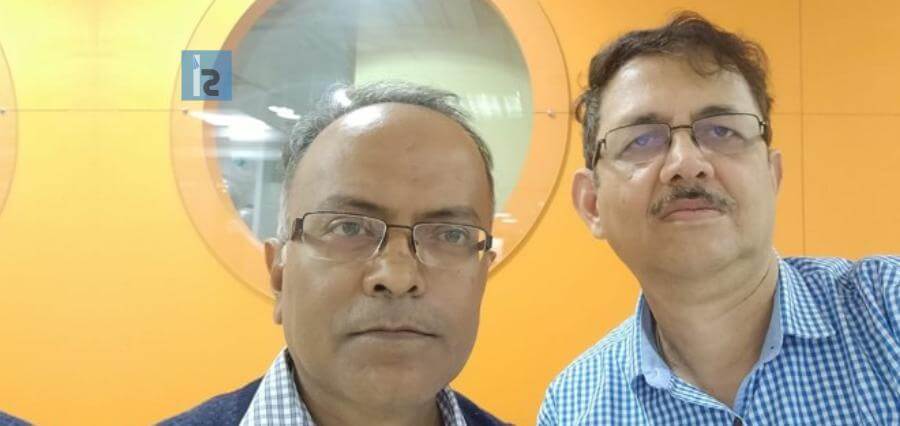WHO has defined palliative care as, “an approach that improves the quality of life of patients and their families facing problems associated with life-threatening illnesses, through prevention and relief of suffering by means of early identification and impeccable assessment and treatment of pain and other problems, physical, psychological and spiritual”.
Every year, there are about 36 million patients in India, with serious illnesses, like cancer, stroke, chronic respiratory diseases, and chronic kidney diseases, who need palliative/ supportive care. Even after discharge from the hospital’s acute care, they make frequent visits to the hospitals and often get re-admitted for several weeks.
A crucial need being neglected is to provide continuity of care from the primary treating specialist who understands the case deeply and can patients the care regimen at home with the help of qualified doctors and skilled nurses. The patient’s quality of life suffers and so does the treatment outcome. This has been observed in a clinical study conducted in Sweden and reported in JMIR Research Protocols Aug 2017. This has also been corroborated by a health care start-up* in Bangalore, which has been delivering palliative care at home for the past 18 months.
Across the globe, only 14% of the population who need palliative care receives it and in India, only 1% of the population has access to palliative care. Just cancer itself accounts for over 17 million cases every year with India having over 2 million cases. There is also a rapid growth in the aging population and India is expected to have about close to 200 Million by the next 6 to 7 Years. Palliative care is best done by a multi-disciplinary team, however, skilling is limited and adoption of palliative care has been very slow.
The barriers to adoption of palliative/ supportive care at home are: a) inaccessibility of pain control methods, b) unavailability of skilled professionals, c) mindset favoring treatment even when palliation is called for, and d) unavailability of a multidisciplinary team for delivering care at home. There are few models engaging a multidisciplinary clinical team to deliver palliative care to patients at home. Such coverage is limited and is not responsive enough.
However, a collaborative model has the potential to address these barriers and enhance the delivery of palliative/ supportive care at home. An effective collaborative model template would consist of clinical workflows, analytics-driven anticipative care protocols, supportive care network of clinicians (doctors and paramedics), care providers, and others all connected in one platform.
This model enables the specialists/ hospitals to extend their care to home. This enables remote monitoring of patients’ conditions, quick clinical response to episodes and achieving high compliance to care protocol. A collaborative localized ecosystem of doctors and paramedics provides the last mile physical touch of care. An ecosystem network of care-providers, pharmacies, path labs, and suppliers deliver the required services to the patients at home on demand.
The adoption of technology is an important enabler of this model. Over the last several years there has been some movement and investments into this area. Areas like Internet/ Mobile technologies, IOT activated devices, Wearable technologies, electronic records, telemedicine, and remote diagnostics are already in deployment and have attracted investment from a number of private companies.
Few doctors/ Specialists have been using these technologies in a limited manner. It allows them to provide continued care at home for such patients, with help of collaborative and ongoing support from the palliative home care team and local family physicians.
However, these technologies need to be designed for collaborative care delivery, going beyond clinical consulting. The devices at the patients’ side need to be non-intrusive and simple to use, keeping in mind the needs of palliative care. Another important enabler of this collaborative care model is the curated clinical network and its clinical co-ordination. And the third key part of this model is the win-win business model. This has to consider the sharing of revenue and accountability while retaining the trust among the healthcare providers and the patients.
The model has the potential to be leveraged beyond palliative/ supportive care and can transform the delivery of follow up care to patients at home.
Specialists’ capacity can be augmented by up to 6X. The cost of care to patients can come down 3X to 5X. OPD and step-down care facilities in Hospitals can be freed up by 30% to 50%. Hospitals can focus their resources on high-value acute care treatment and become more efficient.
This can help in bridging the health care access gap across the country.
About the Authors
Mr. Sundararajan (Sundar) Srinivasan is the Chairman, MD and Co-founder of Ubiqare Health Pvt. Ltd. Armed with a Master’s Degree in Control & Instrumentation, Mr. Srinivasan has been developing and leading innovations in India, Asia, Europe, and the US over the past 30 years. He has pioneered indigenous digital power plant control systems for small hydro and bagasse- based cogeneration plants in the sugar industry in India. His recent work includes leading the development of solutions for penetration of mobile internet for rural India.
CEO and Co-founder of Ubiqare Health Pvt. Ltd., Mr. Sridhar Pillalamarri has held global leadership positions across various organizations. Mr. Pillalamarri is associated with a few NGOs and social organizations such as the Indian Cancer Society (Banglore), Sanman. He actively volunteers to help in Cancer Screening Activities and encourage others to support hospices, hospitals and other organizations. Mr. Pillalamarri holds a Master’s Degree in Control & Instrumentation from IIT Bombay is currently based in Bangalore.


